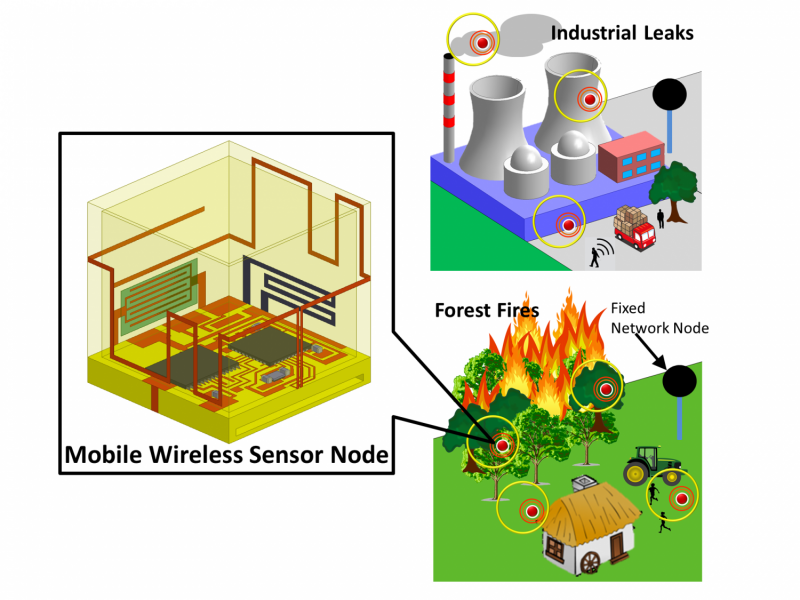Smart sensors could save lives

3-D-printed, disposable sensors capable of detecting noxious gases and changes in temperature and humidity, could revolutionize environmental monitoring.
In an emergency, early warning is key to escaping from a hazard, such as a forest fire or a chemical leak. Motivated to improve on safety, a team from KAUST is using 3-D printing to develop a cheap, reliable system to signal danger1.
Existing early warning systems rely on satellite monitoring, watch towers or expensive fixed sensors. The system, developed by a team led by Associate Professor of Electrical Engineering Atif Shamim, works by saturating high-risk areas with disposable packages of sensors (sensor nodes) that are linked wirelessly to fewer fixed nodes that raise the alarm.
Shamim sees this as part of a drive towards an internet of things, "where infrastructure makes smart decisions in place of humans."
This proof-of-concept study designed small sensors that can pick up heat and low humidity, both hallmarks of forest fires, as well as hydrogen sulfide, a toxic industrial gas. These small sensors were inkjet-printed onto a 3-D-printed, 2-cm3 node containing a battery and microelectronic circuit board along with an antenna that transmits in any direction.
Shamim says they adopted 3-D- and inkjet-printing, the "next revolution in industrial manufacturing," because they are additive processes, making them fast, low-cost and environmentally friendly. "Material is deposited in precise quantities only at the desired location," he explained. "Traditional manufacturing methods take bulk material and gradually remove material to realize the final shape, resulting in significant wastage."
Designed by Ph.D. student Muhammad Farooqui, the node has been tested in both lab and field. It survives being dropped from a height and temperatures up to 70ºC which, says Shamim, is "good enough to give an early warning in cases of wild fire." He believes it is the first "low-cost, fully integrated, packaged, 3-D-printed wireless sensor node for real-time environmental monitoring."
Currently the nodes are built using a combination of 3-D and inkjet printing because no 3-D printer can accurately deposit all the materials into the complex design. However, they will soon be made by a single machine, which will drastically reduce manufacturing time.
The next step is to incorporate an energy source, making the nodes self-sustainable in remote locations. "Inkjet-printed solar cells have already been demonstrated," Shamim enthused. "Eventually we want to get rid of the battery entirely."
Removing the battery, together with scaling up manufacture and mass-producing customized chips in place of the circuit board, will take the cost of each sensor node below a dollar: a small price to pay for a technology that could save hundreds of thousands of lives.
More information: Muhammad Fahad Farooqui et al. 3D-Printed Disposable Wireless Sensors with Integrated Microelectronics for Large Area Environmental Monitoring, Advanced Materials Technologies (2017). DOI: 10.1002/admt.201700051




















